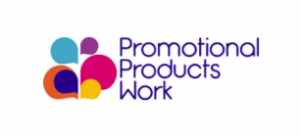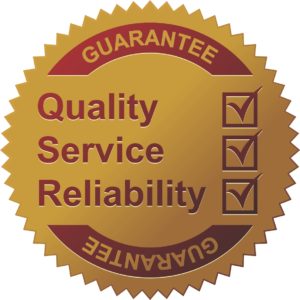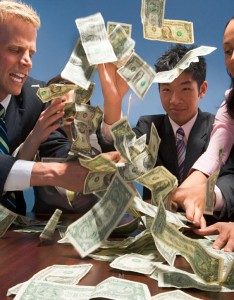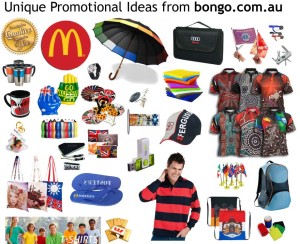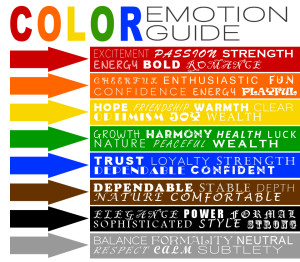25 Insane (But True) Facts About Promotional Products
If you’re in the business of finding promotional products, you know the impact they can have on an organisation’s marketing efforts. But do you know these fun facts about promotional products?
- Eight in 10 consumers own between one and 10 promotional products.
- Fifty-three percent of these people use a promotional product at least once a week.
- Six in 10 of them keep promotional products for up to two years.
- Only one in five people will trash an unwanted promotional product.
- Before receiving a promotional product, 55 percent of people had done business with the advertiser. After receiving a promotional product, 85 percent of people did business with the advertiser.
- With nearly six thousand impressions, bags generate more impressions than any other promotional product in the U.S.
- Thirty-one percent of U.S. consumers own a promotional bag.
- At one-tenth of a cent, bags tie with writing instruments for the lowest cost per impression of any promotional product in the U.S.
- The first known promotional products – commemorative buttons – trace back to 1789 when George Washington was elected president.
- Fifty-three percent of the time, promotional products create a more favorable impression of the advertiser.
- Forty-eight percent of consumers would like to receive promotional products more often.
- Consumers hang on to promotional products for an average of 6.6 months.
- Sixty-nine percent of consumers would pick up a promotional product if they deemed it useful.
- Sixty-three percent of consumers pass along the promotional products they no longer wish to keep.
- Eighty-nine percent of consumers can recall the advertiser of a promotional product they’d received in the last two years.
- Ninety-one percent of consumers have at least one promotional product in their kitchen, 74 percent have at least one in their workspace, 55 percent have at least one in their bedroom.
- Seventy-seven percent of consumers say a promotional product’s usefulness is the number-one reason to keep it, with health and safety products, computer products and writing instruments ranked as the most useful.
- The top five buyers of promotional products are clients in education, finance, not-for-profit, healthcare, and construction.
- Wearables are the top product category, followed by writing instruments, bags, calendars and drinkware.
- The first promotional product tradeshow was held in 1914 – there were 32 exhibitors.
- Women are more likely to have bags, writing instruments and calendars, whereas men are more likely to own shirts and caps.
- Ownership of logoed outerwear is highest in the Midwest, with 15 percent of people owning an item.
- Logoed mugs in particular are more effective advertising than radio and television spots; 57 percent of people were able to recall the advertiser on a mug, versus 32 percent of radio and 28 percent of T.V.
- Adding a promotional product to the media mix increases the effectiveness of other media by up to 44 percent.
- Promotional products draw as many as 500 percent more referrals from satisfied customers than an appeal letter alone.
Are you still skeptical about the power or promotional products?
With thanks to PPAI
7 Golden Rules for Picking Great Promotional Products
Everyday customers old and new reach out to BONGO to get sound advice on what promotional products they should use for their business. But what makes a great promotional product? With 1000’s of lines available online, it can be daunting to get to grips with the options!
To help you, here are 7 golden rules for picking great promotional products:
QUALITY
Quality is the key. If a quality and useful promotional product is received by your client - they will certainly remember you.
DESIRABILITY
This is especially important to get right as gifting potential leads an item that isn’t desirable, may reflect your company in the same light: a desirable item denotes a company of quality!
USABILITY
Understand that usability key! Statistics show that 90.4% of people report currently owning or possessing a promotional product received in the last 24 months so it stands to reason that the most useful the item is, the more likely it is that your promotional product will stick around, day in, day out.
RELEVANCE
Understand that relevance is a big factor – and every sector is different. A branded lip balm for a Lawyer’s conference – is that the best fit? Would that gift be relevant and well received by those potential leads? Probably not. Understand your target audience and pick the most desirable items for the people you want to want to reach out to.
CREATIVITY
Use promotional products to make a lasting statement about who your company are, and what you offer. Take time to think of a creative idea that ties in with your brand marketing strategy – what special service do you offer? What goods can you deliver? Don’t be afraid to think outside the box – be fun! Are you a dentist? Why not send out some sugar-free sweets in a playful way? Trying to recruit people to sign up to your gym? Why not gift them a free water bottle so that you’re always on their desk, reminding them to get in touch and get fit – the possibilities are endless!
INTRIGUING
Try and see your product to introduce a bit of curiosity with your potential customers, we can help you with plenty of inspiration! For example, is a client a PR company? Why not send a branded pen with an inscription – ‘What could we write for you?’. Be playful, think outside the box. What would intrigue you to make that enquiry?
GOOD VALUE
However great all the other rules - just remember what would be best associated with your brand: VALUE.
Promo is not for me!
The client is always right…right? Well sometimes..... always…
We’re sure that on occasions, potential clients may say, ‘Promo? Nah, I don’t need promo’.
However, as an industry, we know differently. Here’s what we came up with...
I don't need promo because...
I like to blow our money on big spend marketing and even bigger hair.
This glitzy, shoulder padded, glamorous marketer thinks spending big is impressive. She likes to spend more than she needs to get her message across: she loves commercial radio (5.8 cents per impression), magazine ads (4.5 cents per impression), and TV (1.8 cents per impression). Why would she love tangible product marketing when it comes in at only 0.5 cent per impression? She's impressed by the wine list at the long lunch, not by marketing effectiveness.
We don't need promo because...
We're blood-suckers: you can only take a customer once, right?
These guys see people as walking wallets and use any means to separate the customer from their cash. Their motto is 'there are plenty of fish in the sea', so there is no need to show customers you appreciate them. That is why, with 64% of marketers rating promo as the channel most able to make a person feel appreciated, tangible product marketing is not for these guys. They prefer to stick with flat media like print and digital and avoid building any kind of customer connection at all.
I don't need promo because...
With all this charisma, all I need is a video on You Tube and people just chuck money at me!
It's hard to argue with sheer animal magnetism to drive a cause. This all-knowing marketer has it all, so he can scoff at his peers who have to work hard to drive loyalty. He knows that tangible product marketing is the best channel for invoking loyalty to causes or events (59%) - he just doesn't need the help. (and girls - he's single!).
I don't need promo because...
If my customers respond to my marketing, I’ll have to work harder
We all know how much easier it would be without those pesky customers. This marketer has it all worked out. She can impress her boss with flashy, high-profile campaigns and by using buzzwords, charts and spreadsheets, all the while avoiding the channel that is most effective in getting customers to take action - yes, you guessed it - tangible product marketing! Rated by 51% of marketers as the best channel at being able to get a person to take action, it kills TV at 19%, digital 11%, online 10% and print 9%. But those channels do let her chill on a Friday...
We don't need promo because...
The business is a front for the MOB
Understandably, if like one Mr Soprano, you want to fly under the radar and don’t want customers recalling your name, then you don’t want promo. The problem with tangible product marketing is the way it fosters brand recall and awareness, with 61% of marketers rating it as the best channel for constant message reinforcement compared to 15% for TV, 10% for print, 8% for digital and 6% for direct mail. See, too many witnesses.
Of course you need promo! In the real world, tangible product marketing if spend efficiently, creates positive brand perceptions, recall and results.
The statistics quoted in this article are from research conducted by BPMA and ASI.
Promotional Products - Then and Now
Promotional Products - Then and Now. Promotional items, promotional products, promotional gifts, or advertising gifts, sometimes nicknamed swag or schwag, are articles of merchandise (often branded with a logo) that are used in marketing and communication programs. They are given away to promote a company, corporate image, brand, or event. These items are usually imprinted with a company's name, logo or slogan, and given away at trade shows, conferences, and as part of guerrilla marketing campaigns. The first known promotional products in the United States are commemorative buttons dating back to the election of George Washington in 1789. During the early 19th century, there were some advertising calendars, rulers, and wooden specialties, but there wasn’t an organized industry for the creation and distribution of promotional items until later in the 19th century.
Jasper Meeks, a printer in Coshocton, Ohio, is considered by many to be the originator of the industry when he convinced a local shoe store to supply book bags imprinted with the store name to local schools. Henry Beach, another Coshocton printer and a competitor of Meeks, picked up on the idea, and soon the two men were selling and printing bags for marbles, buggy whips, card cases, fans, calendars, cloth caps, aprons, and even hats for horses. In 1904, 12 manufacturers of promotional items got together to found the first trade association for the industry.
That organization is now known as the Promotional Products Association International or PPAI, which currently has more than 10,000 global members. PPAI represents the promotional products industry of more than 22,000 distributors and approximately 4,800 manufacturers. The UK & Ireland promotional merchandise industry formally emerged as corporate marketing became more sophisticated during the late 1950s. Before this companies may have provided occasional gifts, but there was no recognised promotional merchandise industry.
The real explosion in the growth of the promotional merchandise industry took place in the 1970s. At this time an ever increasing number of corporate companies recognised the benefits gained from promoting their corporate identity, brand or product, with the use of gifts featuring their own logo. In the early years the range of products available were limited; however, in the early 1980s demand grew from distributors for a generic promotional product catalogue they could brand as their own and then leave with their corporate customers. In later years these catalogues could be over-branded to reflect a distributor’s corporate image and distributors could then give them to their end user customers as their own. In the early years promotional merchandise catalogues were very much sales tools and customers would buy the products offered on the pages.
In the 1990s new catalogue services emerged for distributors from various sources. In the nineties there was also the creation of ‘Catalogue Groups’ who offered a unique catalogue to a limited geographical group of promotional merchandise distributor companies. Membership of a Catalogue Group could also offer improved buying terms, a network of fellow distributor companies, & provide other support services. A catalogue group offers discounted products to a select group of distributors who have all been in the industry for over three years. Members of the this group have regional exclusivity as one of their perks. Up until the 1990s the industry had a peak season in which the majority of promotional products were sold. The season featured around Christmas & the giving of gifts. This changed significantly in the early 1990s as Christmas gifts became less appropriate in a multicultural Britain. Corporate companies were also becoming more inventive in their marketing and were now using promotional merchandise throughout the year to support the promotion of brands, products & events. In the early 21st century the role of a promotional merchandise catalogue started to change, as it could no longer fully represent the vast range of products in the market place. By 2007 catalogues were being mailed to targeted customer lists, rather than the blanket postal mailings that had taken place before. The catalogue had now become seen more as a ‘business card’ demonstrating the concept of what a company did, rather than a critical sales tool. In 2009 published results from research involving a representative group of distributor companies, which indicated the usage of hard copy catalogues was expected to fall up to 25% in 2010.
Distributor companies are experts in sourcing creative promotional products. Traditionally, to ensure that they had an effective manufacturer network, they kept themselves aware of the trade product ranges available by attending exhibitions across the world (namely the Trade Only National Show in the UK, PSI in Europe and the PPAI Show in Las Vegas, NV) & from mailings received from manufacturers themselves. In 2004 the way the trade sourced promotional products began to change with the launch an online trade sourcing service which united distributors with manufacturers worldwide. This service is purely for vetted trade promotional merchandise distributor companies & is not available to corporate end user companies. By 2008 almost every distributor had a website demonstrating a range of available promotional products. Very few offer the ability to order products online mainly due to the complexities surrounding the processes to brand the promotional products required. Sourcing Promotional merchandise is, in the main, purchased by corporate companies in USA, Canada, the UK & Ireland through promotional merchandise distributor companies. In the United States and Canada, these distributors are called "Promotional Consultants" or "promotional product distributors."
Distributors have the ability to source & supply tens of thousands of products from across the globe. Even with the advent and growth of the Internet this supply chain has not changed, for a few reasons: Promotional products by definition are custom printed with a logo, company name or message usually in specific PMS colors. Distributors help end-users gather artwork in the correct format and in some cases, distributors might create artwork for end-users. Distributors then interface with manufacturers, printers or suppliers, forwarding artwork in the correct format and correct size for the job. Since good distributors are well aware of several manufacturers' capabilities, they can save an end-user time and money searching for a printer or manufacturer who can produce and ship the end-user's products on time, on specification and in the required quantities. Many distributors operate on the internet and/or in person. Many suppliers wish not to invest in the staffing to service end-users' needs, which is the purpose of merchandise distributor companies.
Products and Promotional merchandise is used globally to promote brands, products, and corporate identity. They are also used as giveaways at events, such as exhibitions and product launches. Promotional products can be used for non-profit organizations to promote their cause, as well as promote certain events that they hold, such as walks or any other event that raises money for a cause. Almost anything can be branded with a company’s name or logo and used for promotion. Common items include t-shirts, caps, keychains, posters, bumper stickers, pens, mugs, or mouse pads. The largest product category for promotional products is wearable items, which make up more than 30% of the total. Eco-friendly promotional products such as those created from recycled materials and bamboo, a renewable resource, are also experiencing a significant surge in popularity. Most promotional items are relatively small and inexpensive, but can range to higher-end items; for example celebrities at film festivals and award shows are often given expensive promotional items such as expensive perfumes, leather goods, and electronics items. Companies that provide expensive gifts for celebrity attendees often ask that the celebrities allow a photo to be taken of them with the gift item, which can be used by the company for promotional purposes.
Other companies provide luxury gifts such as handbags or scarves to celebrity attendees in the hopes that the celebrities will wear these items in public, thus garnering publicity for the company's brand name and product. Brand awareness is the most common use for promotional items. Other objectives that marketers use promotional items to facilitate include employee relations and events, tradeshow traffic-building, public relations, new customer generation, dealer and distributor programs, new product introductions, employee service awards, not-for-profit programs, internal incentive programs, safety education, customer referrals, and marketing research. Promotional items are also used in politics to promote candidates and causes. Promotional items as a tool for non-commercial organizations, such as schools and charities are often used as a part of fund raising and awareness-raising campaigns.
A prominent example was the livestrong wristband, used to promote cancer awareness and raise funds to support cancer survivorship programs and research. Collecting certain types of promotional items is also a popular hobby. In particular, branded antique point of sale items that convey a sense of nostalgia are popular with collectors and are a substantial component to the antique industry. The giving of corporate gifts vary across international borders and cultures, with the type of product given often varying from country to country. Promotional merchandise is rarely bought directly by corporate companies from the actual manufacturers of the promotional products. A manufacturer's expertise lies in the physical production of the products, but getting a product in front of potential customers is a completely different skill set and a complex process.
Within the UK & Ireland promotional merchandise industry a comprehensive network of promotional merchandise distributor companies exist. A promotional merchandise distributor is defined as a company who "has a dedicated focus to the sale of promotional merchandise to end users". (An 'end user' is a corporate company or organisation that purchases promotional merchandise for their own use.) These distributor companies have the expertise to not only take the product to market, but are also to provide the expert support required. The unique aspect of promotional merchandise is that on most occasions the product is printed with the logo, or brand, of a corporate organisation.
The actual manufacturers rarely have the set up to actually print the item. Promotional merchandise distributor companies are expert in artwork and printing processes. In addition to this the promotional merchandise distributors also provide full support in processing orders, artwork, proofing, progress chasing & delivery of promotional products from multiple manufacturing sources. Trade associations In the UK, the industry has two main trade bodies, Promota (Promotional Merchandise Trade Association) founded in 1958, and the BPMA (British Promotional Merchandise Association) established in 1965. These trade associations represent the industry and provide services to both manufacturers & distributors of promotional merchandise. In the United States, PPAI (the Promotional Products Association International) is the not for profit association, offering the industry's largest tradeshow (The PPAI Expo), as well as training, online member resources, and legal advocacy.
Colour and Emotion in Promotional Advertising
Colour and Emotion in Promotional Advertising affects us all. Every colour creates an emotional reaction in people. In design and in choosing promotional products we use colour to help guide emotion and give people an immediate feeling the first time they interact with something. In the design world, colours are purposely selected to meet a bigger goal. What is it that are we trying to say about a company, a product or a brand? Certain colours can attract attention and can convey the feeling of the company and it's branding without even having to say a word. Examples are McDonalds, Nike, Apple, Microsoft - just a few of the companies that don't need words - just icons and colours.
These are the common patterns with regard to colours and emotions that have been identified as to how people perceive colours and what impact this has when customers are purchasing products. There's no doubt that colours have a big impact on the end result - so next time you are purchasing your promotional product it would wise to think about what product colour would be best to truly represent your company or brand in the most accurate and appealing way.
Examples of colour meanings:-
- RED * energetic, attention-grabbing, exciting and aggressive
- YELLOW * cheerful, friendly, positive and energetic
- ORANGE * fun, playful, childlike, happy, energetic, modern
- BLUE * reliable, secure, trustworthy
- GREEN * trustworthy, refreshing, restful, soothing
- BROWN * stable, secure, durable
- BEIGE * durable, classic, neutral
- BURGUNDY * elegant, expensive
- PINK * romantic, soft, tender
- PURPLE * mysterious, sensual, regal
- LAVENDER * nostaligic, delicate
- GREY * classic, timeless, soothing
- WHITE * innocent, simple, clean, sterile
- BLACK * classic, elegant, serious, bold, powerful
Good advice to keep in mind when consideration your next range of promotional products.
Promotional Products provide affordable, accountable, measurable advertising.
In these economic times - now more than ever, marketers need to reward and build brand loyalty. It is important to continue to acknowledge and thank clients, employees and suppliers.
Marketers spend more than $1.34 billion dollars (AUS) and $121 million (NZ) a year on promotional products for one reason, they work.
- 52% say their impression of a company is more positive after receiving a promotional product gift
- 76% recall the name advertised on the product
- 55% keep the item for more than one year
- Nearly 50% of recipients use them daily
- 52% of people do business with a company after receiving a promotional product
- Spend less, achieve more and remind people about the benefit of doing business with you
Promotional Products in the Home:
- How many people have at least one promotional product in their kitchens? 91%
- How many have 2 or more in their kitchens? 81%
- In fact, the kitchen is the #1 place people use and keep their promotional products.
(People spend on average 3-5 hours a day in their kitchens)
Promotional Products in the Office:
- How many people have at least one promotional product in their offices? 74%
- How many have 2 or more in their offices? 59%
- In the work place, more than half of people hold onto their promotional product from 1 to more than 4 years
Reach & Recall:
- 71% of business travellers surveyed reported receiving a promotional product in a 12 month period
- 33.7% of this group had the item on their person
- 56% of people kept their promotional product for more than one year
- 76.4% said they kept their promotional product because it was useful
- 76.1% of the respondents could recall the advertisers name on the product
How effective are Promotional Products in staff retention, motivation and brand interest?
- 75% of Human Resource mangers surveyed are using promotional products in recognition programs
- 72% of marketing and HR managers say that promotional products are very effective in motivation and retention of staff
- 100% of advertisers said that adding a promotional giveaway returned a favourable response to their campaign
- 69% of advertisers said promotional products increased brand interest and 84% it created more favourable impressions of the brand itself
Understanding the medium:
- A product is just a product, until it is linked with a promotion, it then becomes an advertisement
- The most successful advertising and marketing campaigns are the result of a planed strategy.
- Throwing products at your target market without that planning is a waste your marketing dollars
- The product is only one component in the whole campaign
- The creativity used to get a response is the key to increasing profits and promoting brands
Successful campaigns require:
- Strategic ‘logistical’ and ‘emotional’ roll out
- Action engagement triggers
- Data collection analysis
- Technical logo application knowledge
- Creating the difference between a ‘passive’ and ‘active’ promotion

